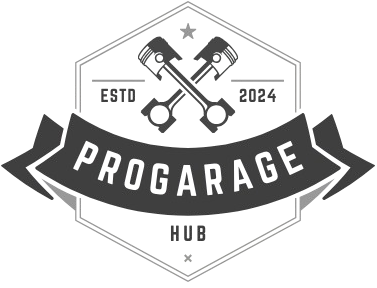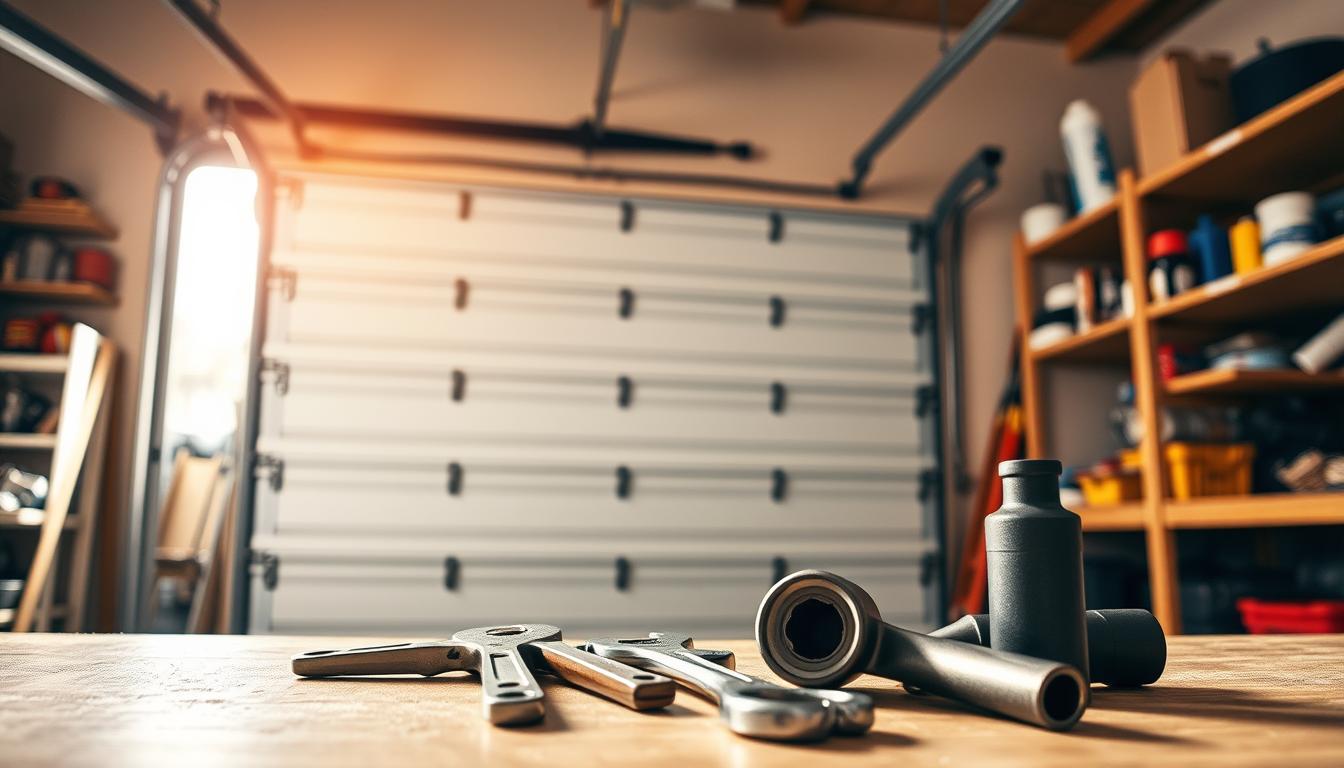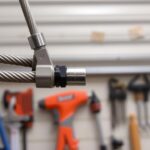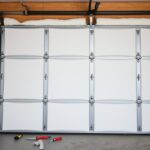Replacing your garage door rollers is a crucial task that ensures smooth operation and safety. Whether you’re a DIY enthusiast or considering professional help, understanding the process is key to avoiding injuries and property damage. This guide offers expert tips and tricks to make the process seamless, from essential safety precautions to final lubrication.
Professional service guidelines and video tutorials will supplement the instructions, providing a clear and reliable path to success. By following these steps, you’ll not only ensure a proper replacement but also maintain the longevity of your garage door system.
Key Takeaways
- Always disconnect power and unwind springs before starting the replacement.
- Follow manufacturer recommendations and safety guidelines.
- Use video tutorials for visual guidance.
- Ensure proper lubrication after installation.
- Consider professional service if unsure about any step.
Understanding Garage Door Roller Replacement
Garage door roller replacement is a process that involves swapping out worn or damaged rollers to ensure smooth and safe door operation. These rollers, often likened to the body’s joints, are essential for fluid movement. Over time, they can deteriorate due to wear, damage, or insufficient lubrication, leading to noisy or jerky door movement.
Proper roller functionality is vital for the overall balance and safety of your garage door. Malfunctioning rollers can cause the door to become misaligned, posing a risk to people and vehicles. Understanding how rollers work and when they need replacement helps homeowners decide whether to tackle the job themselves or seek professional help.
Many manufacturers and service providers offer detailed guides and video tutorials to assist with the process. Timely replacement is key to preventing further damage and ensuring the longevity of your garage door system.
Essential Safety Precautions
Safety should always come first when working on your garage door rollers. Taking the right precautions can prevent injuries and property damage, ensuring a smooth process for everyone involved.
Safety Gear and Protective Measures
Before starting, gather essential safety gear. This includes goggles to protect your eyes from debris and gloves for a firm grip and hand protection. These items are crucial for safeguarding against potential hazards during the replacement process.
Steps to Secure the Garage Door
Disconnect the electric garage door opener to avoid any accidental activations. Next, carefully unwind the torsion springs using steel winding bars, following manufacturer guidelines to release tension safely. Clamps can be used to hold the door in place, preventing unintended movement that could lead to injury or damage.
Professional advice often emphasizes securing the door properly before starting any work. This step is vital to ensure your safety and the integrity of the garage door system.
Necessary Tools and Materials
Having the right tools and materials is essential for a successful garage door roller replacement. Gather everything you need beforehand to ensure efficiency and safety.
List of Essential Tools
You’ll need a mix of common and specialized tools:
- Screwdrivers (flathead and Phillips)
- Hammer
- Pliers
- Steel winding bars
- C-clamps
Materials and Replacement Parts Overview
Quality materials are crucial for durability:
| Tool/Material | Description | Importance |
|---|---|---|
| Steel Winding Bars | Used to safely release spring tension | Prevents accidents during spring adjustment |
| Nylon Rollers | Durable, quiet option | Ensures smooth door operation |
| White Lithium Grease | Lubricates moving parts | Extends part lifespan |
| C-clamps | Holds door in place | Ensures safety during work |
Always verify compatibility of parts with your setup and follow manufacturer guidelines for quality assurance.
Step-by-Step Process for Replacing Garage Door Rollers
Replacing your garage door rollers involves a series of careful steps to ensure safety and efficiency. This process requires attention to detail and the right tools to avoid any complications.
Preparation and Setup
Begin by disconnecting the automatic opener and securing the door with clamps to prevent movement. This step is crucial for maintaining control during the replacement process.
Replacing Top and Middle Rollers
Remove the hinges one at a time to keep the door stable. Take out the old rollers and insert the new ones, ensuring they fit snugly in the track for smooth operation.
Final Adjustments and Lubrication
Lubricate all moving parts, including the rollers and springs, to reduce friction. Check the door’s balance and spring tension, then test the door to ensure it operates smoothly.
| Step | Action | Importance |
|---|---|---|
| 1 | Disconnect Opener | Ensures safety |
| 2 | Secure Door | Prevents movement |
| 3 | Replace Rollers | Ensures smooth operation |
| 4 | Lubricate Parts | Extends lifespan |
| 5 | Test Door | Verifies proper function |
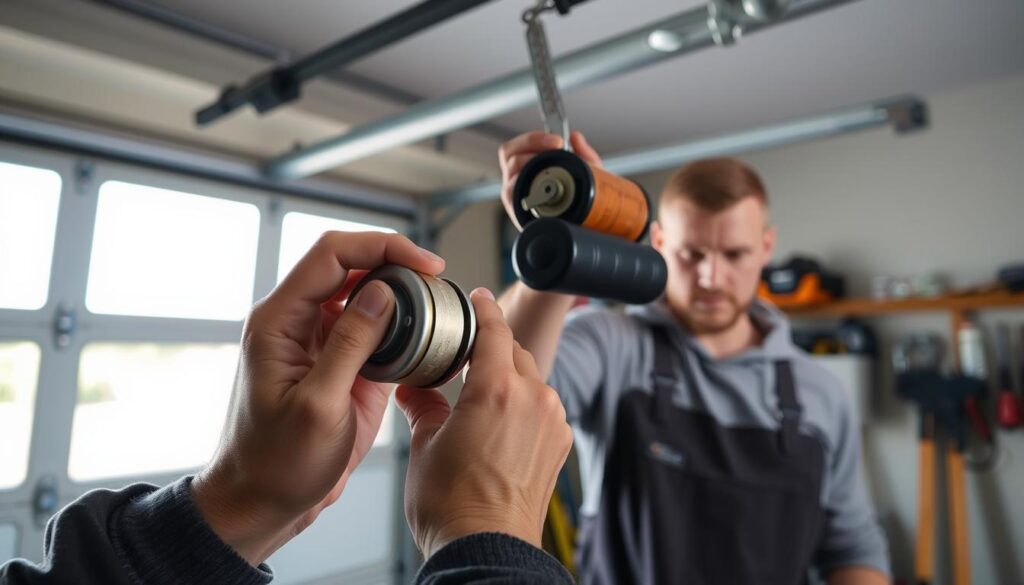
Bottom Garage Door Roller Replacement Strategy
Replacing bottom rollers is a unique task compared to other rollers due to their attachment to support cables and their critical role in door stability.
Unique Considerations for Bottom Rollers
Bottom rollers differ from top and middle rollers because they are directly connected to the door’s support cables, which are under tension. This setup requires extra caution to avoid injury or damage.
| Step | Action | Importance |
|---|---|---|
| 1 | Bend the track safely | Prevents cable detachment |
| 2 | Avoid removing bottom hinges | Maintains door alignment |
| 3 | Retain support cables | Prevents injury from cable snap |
| 4 | Slide out and replace roller carefully | Ensures door remains stable |
| 5 | Re-secure and realign roller | Ensures proper door function |
After replacing the bottom roller, double-check all connections and test the door to ensure smooth operation. Always follow professional guidelines to avoid improper installation and potential hazards.
Recognizing Signs of Worn-Out Rollers
Identifying when your rollers may need attention is crucial for maintaining your garage door’s performance. Over time, wear and tear can lead to noticeable issues that signal it’s time for a replacement.
Excessive noise is one of the most common indicators. If your door produces scraping, grinding, or clicking sounds, it could mean the rollers are deteriorating. These noises often intensify as the condition worsens, making early detection important.
Another sign is uneven movement. If the door jerks or moves inconsistently, it may be due to worn-out rollers struggling to guide it smoothly. Additionally, loose rollers or those misaligned on the track can cause the door to wobble or catch during operation.
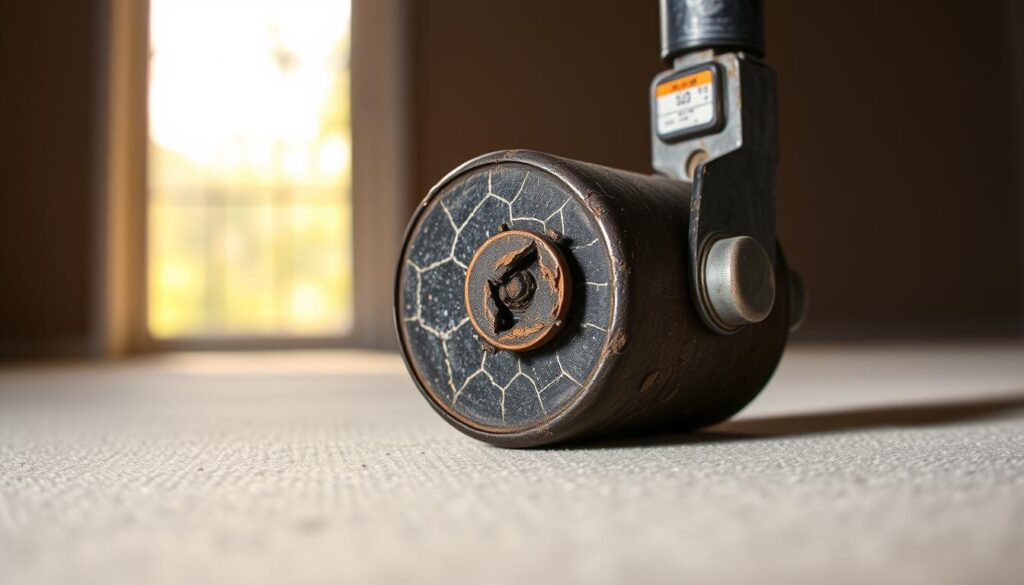
Visually inspecting for damage is also essential. Look for cracks, breaks, or excessive wear on the rollers. If you notice any of these issues, it’s important to address them promptly to prevent further damage to the entire system.
Ignoring these signs can lead to more severe problems, potentially resulting in higher repair costs. If you’re unsure about the condition of your rollers, consider consulting a professional to ensure everything is in good working order.
Why Hire a Professional for Your Garage Door Roller Replacement
When it comes to ensuring the smooth operation of your garage door, professional installation is often the best choice. While DIY projects can be cost-effective, the risks and potential complications make hiring a professional a wise decision. Here’s why:
Benefits of Professional Installation
Hiring a professional ensures safety and expertise. Trained technicians understand the complexities of the system and can handle tasks like spring adjustment and roller alignment with precision. They use high-quality parts, such as precision nylon rollers, which offer durability and quieter operation. Professionals also provide warranties, giving you peace of mind and protection against future issues.
Avoiding Common DIY Pitfalls
DIY repairs can lead to costly mistakes. Improper spring adjustment can cause injuries or further damage. Professionals ensure the door’s balance and tension are correct, preventing uneven movement and extending the system’s lifespan. They also troubleshoot issues that might not be obvious, ensuring a reliable and long-lasting repair.
While DIY might seem cheaper upfront, hidden costs like repeated repairs or damaged parts can add up. Professionals offer fair pricing and transparent quotes, helping you avoid unexpected expenses. Their work is backed by guarantees, ensuring a job well done.
In conclusion, hiring a professional for your garage door roller replacement offers numerous benefits. From safety and expertise to cost savings and reliability, it’s a decision that provides long-term value and peace of mind.
Conclusion
In conclusion, maintaining your garage door system requires attention to detail and adherence to expert guidelines. Whether you choose a DIY approach or opt for professional service, prioritizing safety and precision is essential. Regular lubrication and timely part replacement can significantly extend the lifespan of your system.
Key steps include disconnecting power, securing the door, and carefully replacing worn parts. Professional services often provide warranties and use high-quality components, ensuring smooth operation. DIY enthusiasts should follow video tutorials and manufacturer instructions closely to avoid complications.
For additional guidance, explore our video resources and articles. By applying these tips, homeowners can achieve a successful, long-lasting repair solution.
